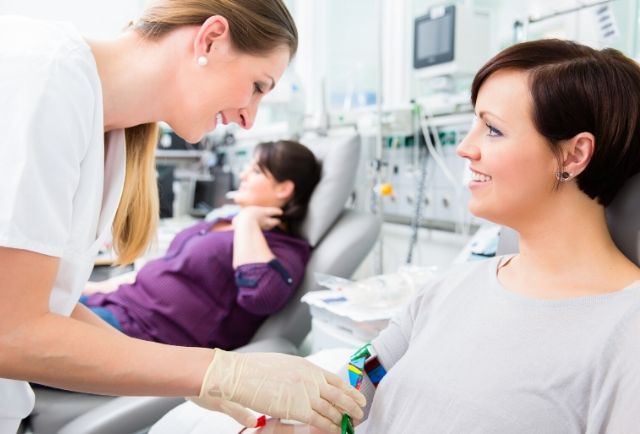Getting My Northeast Medical Institute - New Haven Campus Phlebotomy Course & Cna Class To Work
Getting My Northeast Medical Institute - New Haven Campus Phlebotomy Course & Cna Class To Work
Blog Article
Getting My Northeast Medical Institute - New Haven Campus Phlebotomy Course & Cna Class To Work
Table of ContentsNortheast Medical Institute - New Haven Campus Phlebotomy Course & Cna Class for DummiesThe smart Trick of Northeast Medical Institute - New Haven Campus Phlebotomy Course & Cna Class That Nobody is Talking AboutWhat Does Northeast Medical Institute - New Haven Campus Phlebotomy Course & Cna Class Do?The Facts About Northeast Medical Institute - New Haven Campus Phlebotomy Course & Cna Class UncoveredAbout Northeast Medical Institute - New Haven Campus Phlebotomy Course & Cna ClassThe Facts About Northeast Medical Institute - New Haven Campus Phlebotomy Course & Cna Class Revealed
The use of such tools ought to be come with by other infection avoidance and control methods, and training in their use. Not all security gadgets apply to phlebotomy. Before choosing a safety-engineered tool, individuals need to thoroughly examine available devices to establish their ideal use, compatibility with existing phlebotomy methods, and efficiency in safeguarding team and clients (12, 33).For setups with low resources, expense is a driving variable in procurement of safety-engineered devices - PCT Classes. Where safety-engineered devices are not available, skilled use a needle and syringe serves. Unintentional exposure and certain info about an event ought to be recorded in a register. Support services should be advertised for those who go through unintended direct exposure.
Among the essential pens of top quality of care in phlebotomy is the involvement and teamwork of the patient; this is equally advantageous to both the health and wellness worker and the individual. Clear info either created or spoken must be available to each individual that goes through phlebotomy. Annex F gives example text for discussing the blood-sampling treatment to a patient. In the blood-sampling space for an outpatient division or facility, give a comfortable reclining couch with an arm rest.
See This Report on Northeast Medical Institute - New Haven Campus Phlebotomy Course & Cna Class
Make certain that the indications for blood tasting are plainly defined, either in a composed procedure or in documented guidelines (e.g. in a research laboratory kind). Collect all the tools needed for the procedure and area it within secure and easy reach on a tray or cart, making sure that all the items are clearly visible.
Present yourself to the client, and ask the individual to mention their complete name. Check that the research laboratory kind matches the person's identification (i.e. match the person's details with the research laboratory form, to ensure precise recognition).
Make the patient comfortable in a supine position (preferably). Place a clean paper or towel under the patient's arm. Discuss the examination to be executed (see Annex F) and get spoken approval. The client has a right to refuse an examination any time before the blood tasting, so it is necessary to ensure that the individual has understood the treatment.
The Only Guide to Northeast Medical Institute - New Haven Campus Phlebotomy Course & Cna Class
Expand the client's arm and evaluate the antecubital fossa or lower arm. Locate a capillary of an excellent dimension that is noticeable, straight and clear.
DO NOT place the needle where capillaries are diverting, due to the fact that this boosts the opportunity of a haematoma. Situating the capillary will assist in establishing the correct size of needle.
Haemolysis, contamination and presence of intravenous fluid and medicine can hop over to these guys all change the results (39. Nursing staff and doctors might access central venous lines for specimens following protocols. Nonetheless, samplings from main lines carry a threat of contamination or incorrect lab examination outcomes (https://issuu.com/northeastmed#google_vignette). It is appropriate, however not perfect, to injure samplings when very first introducing an in-dwelling venous device, prior to linking the cannula to the intravenous liquids.
Not known Facts About Northeast Medical Institute - New Haven Campus Phlebotomy Course & Cna Class
Allow the area to dry. Failing to enable enough contact time enhances the danger of contamination. DO NOT touch the cleaned up site; specifically, DO NOT position a finger over the capillary to guide the shaft of the exposed needle. It the website is touched, repeat the sanitation. Execute venepuncture as adheres to.
Ask the individual to create a clenched fist so the capillaries are more noticeable. Enter the blood vessel swiftly at a 30 level angle or less, and remain to present the needle along the vein at the simplest angle of entrance - Phlebotomy Classes. Once enough blood has been accumulated, launch the tourniquet prior to taking out the needle
Some Known Details About Northeast Medical Institute - New Haven Campus Phlebotomy Course & Cna Class
Take out the needle delicately and use gentle stress to the website with a clean gauze or completely dry cotton-wool ball. Ask the client to hold the gauze or cotton woollen in position, with the arm expanded and increased. Ask the individual NOT to bend the arm, due to the fact that doing so creates a haematoma.

The 30-Second Trick For Northeast Medical Institute - New Haven Campus Phlebotomy Course & Cna Class
Do not press the syringe bettor due to the fact that additional pressure raises the risk of haemolysis. Where possible, keep the tubes in a rack and relocate the rack towards you. Inject downwards right into the proper coloured stopper. DO NOT remove the stopper since it will launch the vacuum cleaner. If the example tube does not have a rubber stopper, infuse incredibly gradually into the tube as minimizing the stress and velocity utilized to transfer the sampling reduces the threat of haemolysis.

Report this page